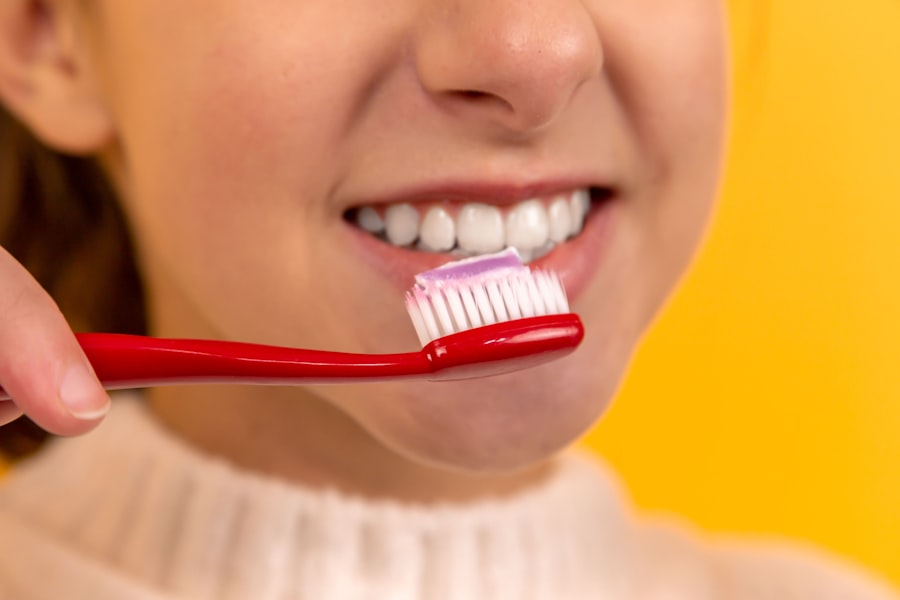In the competitive landscape of dental practices, effective marketing strategies are essential for attracting and retaining patients. One of the most powerful tools in this arsenal is dental postcard marketing. This traditional yet impactful method allows dental practices to reach potential patients directly in their mailboxes, creating a tangible connection that digital marketing often lacks.
Postcards can convey important information about services, promotions, and practice updates in a visually appealing format that captures attention. Unlike emails that can easily be overlooked or filtered into spam folders, a well-designed postcard has the potential to stand out and engage recipients. Moreover, dental postcard marketing offers a unique opportunity for practices to showcase their brand personality.
The design elements, colors, and messaging can reflect the practice’s values and ethos, making it easier for potential patients to relate to the brand. For instance, a family-oriented dental practice might use warm colors and images of smiling families, while a cosmetic dentistry office might opt for sleek designs that emphasize aesthetics. This ability to communicate visually and emotionally can significantly enhance the effectiveness of marketing efforts, leading to increased patient inquiries and appointments.
Key Takeaways
- Dental postcards are a powerful tool to attract and retain patients through targeted, tangible marketing.
- Effective postcard design should be clear, visually appealing, and include a strong call-to-action.
- Identifying and targeting the right audience ensures higher engagement and better campaign results.
- Combining print postcards with digital marketing strategies amplifies reach and improves overall effectiveness.
- Personalization and compelling offers on postcards significantly boost response rates and patient loyalty.
Designing Effective Dental Postcards
Creating an effective dental postcard requires careful consideration of both design and content. The visual layout should be clean and professional, with a clear hierarchy that guides the reader’s eye. High-quality images of the dental team, office environment, or satisfied patients can create a welcoming impression.
Additionally, the use of colors should align with the practice’s branding while also being eye-catching enough to draw attention. For example, using bright colors for promotions can help those messages pop against a more subdued background. Content is equally important; it should be concise yet informative.
A compelling headline can grab attention immediately, while the body text should clearly communicate the value proposition. Whether it’s a special offer for new patients or information about a new service, the message should be straightforward and easy to understand. Including a call-to-action (CTA) is crucial as well; phrases like “Call today for an appointment!” or “Visit our website for more information!” encourage recipients to take the next step.
Additionally, incorporating testimonials or reviews can lend credibility and persuade potential patients to choose your practice over competitors.
Targeting the Right Audience for Your Dental Practice

Identifying and targeting the right audience is fundamental to the success of any dental postcard marketing campaign. Understanding the demographics of your ideal patients—such as age, income level, and family status—can help tailor your messaging and design to resonate with them. For instance, if your practice specializes in pediatric dentistry, targeting families with young children in your local area would be beneficial.
Conversely, if you focus on cosmetic procedures, targeting adults aged 25-45 who are likely to invest in their appearance would be more appropriate. Geographic targeting is another critical aspect of audience selection. By focusing on specific neighborhoods or communities where your practice is located, you can maximize the relevance of your postcards.
Utilizing data from local census information or community surveys can provide insights into population density and demographics. Additionally, leveraging existing patient data can help identify trends in who is already visiting your practice, allowing you to create targeted campaigns that appeal to similar individuals. This strategic approach not only increases the likelihood of engagement but also enhances the overall return on investment for your marketing efforts.
Maximizing ROI with Dental Postcard Campaigns
| Metric | Description | Typical Value | Impact on ROI |
|---|---|---|---|
| Response Rate | Percentage of recipients who respond to the postcard | 2% – 5% | Higher response rates increase patient acquisition and ROI |
| Cost per Postcard | Average cost to design, print, and mail one postcard | 0.50 – 1.50 | Lower costs improve overall campaign profitability |
| Conversion Rate | Percentage of respondents who schedule an appointment | 30% – 50% | Higher conversion rates lead to more paying patients |
| Average Revenue per New Patient | Estimated revenue generated from each new patient | 300 – 600 | Higher revenue per patient boosts ROI |
| Return on Investment (ROI) | Ratio of net profit to campaign cost | 300% – 700% | Measures overall campaign effectiveness |
| Follow-up Rate | Percentage of leads contacted after initial response | 80% – 95% | Effective follow-up increases conversion and ROI |
| Timing of Mailings | Optimal days/times to send postcards for best engagement | Mid-week, mid-month | Improves open and response rates |
To maximize return on investment (ROI) from dental postcard campaigns, it is essential to implement strategies that ensure cost-effectiveness while driving results. One effective approach is to segment your mailing list based on patient history or demographics. By sending tailored postcards to specific groups—such as reminders for routine check-ups to existing patients or special offers for new patients—you can increase engagement rates and reduce wasted resources on irrelevant mailings.
Additionally, timing plays a crucial role in maximizing ROI. Sending postcards during specific times of the year when people are more likely to seek dental care—such as after the holiday season or at the beginning of the school year—can lead to higher response rates. Furthermore, tracking the performance of each campaign through unique codes or dedicated phone numbers allows practices to analyze which strategies yield the best results.
This data-driven approach enables continuous improvement in future campaigns, ensuring that marketing dollars are spent wisely.
Integrating Digital and Print Marketing for Dental Practices
In today’s multifaceted marketing landscape, integrating digital and print strategies can amplify the effectiveness of dental postcard campaigns. While postcards provide a tangible touchpoint with potential patients, digital marketing channels such as social media and email can enhance visibility and engagement. For instance, promoting a postcard campaign on social media platforms can create buzz and encourage recipients to share their experiences with friends and family.
Moreover, utilizing QR codes on postcards can bridge the gap between print and digital marketing. By scanning a QR code, recipients can be directed to your website or a specific landing page that provides more information about services or promotions. This seamless integration not only enhances user experience but also allows practices to track engagement metrics more effectively.
By analyzing how many people visit the website after receiving a postcard, practices can gain insights into the effectiveness of their campaigns and make informed decisions moving forward.
Tracking and Analyzing the Success of Your Dental Postcard Campaign

To ensure that dental postcard marketing efforts are yielding desired results, tracking and analyzing campaign performance is essential. Implementing unique tracking methods—such as dedicated phone numbers or specific landing pages—can help determine how many inquiries or appointments result from each postcard campaign. This data provides valuable insights into which designs, messages, or offers resonate most with your audience.
Additionally, utilizing customer feedback can enhance understanding of campaign effectiveness. Surveys sent to patients who responded to postcards can reveal what motivated them to take action and how they perceived the messaging. Analyzing this feedback alongside quantitative data allows practices to refine their strategies continuously.
By identifying trends in patient responses over time, practices can adapt their marketing efforts to better meet patient needs and preferences.
Tips for Creating Compelling Offers on Dental Postcards
Crafting compelling offers on dental postcards is crucial for capturing attention and driving action from potential patients. One effective strategy is to create limited-time promotions that instill a sense of urgency. For example, offering a discount on teeth whitening services for appointments booked within a specific timeframe encourages recipients to act quickly rather than putting off their decision.
Another approach is to highlight unique services that differentiate your practice from competitors. If your practice offers advanced technology such as same-day crowns or sedation dentistry options, showcasing these features can attract patients seeking convenience or comfort during their dental visits. Additionally, including testimonials from satisfied patients who have taken advantage of similar offers can enhance credibility and encourage others to follow suit.
Leveraging Personalization in Dental Postcard Marketing
Personalization is a powerful tool in dental postcard marketing that can significantly enhance engagement rates. By addressing recipients by name and tailoring messages based on their previous interactions with the practice—such as recent treatments or upcoming appointments—practices can create a more meaningful connection with potential patients. Personalized postcards demonstrate that you value each patient as an individual rather than just another number on a mailing list.
Furthermore, incorporating personalized recommendations based on patient history can increase relevance and drive action. For instance, if a patient has previously expressed interest in cosmetic procedures, sending them a postcard featuring an exclusive offer on teeth whitening or veneers can prompt them to schedule an appointment. This level of personalization not only improves response rates but also fosters loyalty among existing patients who appreciate being recognized as valued members of the practice community.
In conclusion, dental postcard marketing remains a potent strategy for attracting new patients and retaining existing ones when executed thoughtfully and strategically. By focusing on design elements, targeting the right audience, maximizing ROI through careful planning, integrating digital efforts, tracking success metrics, crafting compelling offers, and leveraging personalization techniques, dental practices can create impactful campaigns that resonate with their target market and drive growth in an increasingly competitive environment.


